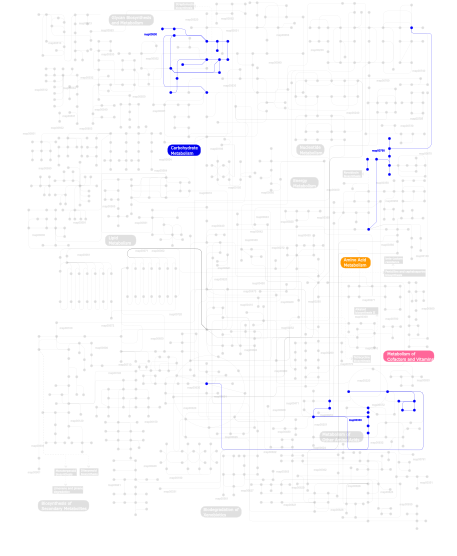HRDCHelicase and RNase D C-terminal |
|---|
| SMART accession number: | SM00341 |
|---|---|
| Description: | Hypothetical role in nucleic acid binding. Mutations in the HRDC domain cause human disease. |
| Interpro abstract (IPR002121): | The HRDC (helicase and RNaseD C-terminal) domain is comprised of two orthogonally packed alpha-hairpin subdomains, and is involved in interactions with DNA and protein. HRDC domains are found at the C terminus of many RecQ helicases, including the human Werner and Bloom syndrome proteins [ (PUBMED:10647186) ]. RecQ helicases have been shown to unwind DNA in an ATP-dependent manner. The structure of the HRDC domain consists of a 4-5 helical bundle of two orthogonally packed alpha-hairpins, and as such it resembles auxiliary domains in bacterial DNA helicases and other proteins that interact with nucleic acids. A positively charged region on the surface of the HRDC domain is able to interact with DNA. The HRDC domain is also present in eukaryotic and archaeal RNA polymerase II subunit RBP4, the N-terminal of which forms a heterodimerisation alpha-hairpin [ (PUBMED:15591044) (PUBMED:11741548) ]. The HRDC domain has a putative role in nucleic acid binding. Mutations in the HRDC domain associated with the human BLM gene result in Bloom Syndrome (BS), an autosomal recessive disorder characterised by proportionate pre- and postnatal growth deficiency; sun-sensitive, telangiectatic, hypo- and hyperpigmented skin; predisposition to malignancy; and chromosomal instability [ (PUBMED:9397680) ]. |
| GO function: | nucleic acid binding (GO:0003676) |
| Family alignment: |
There are 17943 HRDC domains in 17352 proteins in SMART's nrdb database.
Click on the following links for more information.
- Evolution (species in which this domain is found)
- Literature (relevant references for this domain)
- Metabolism (metabolic pathways involving proteins which contain this domain)
- Structure (3D structures containing this domain)
- Links (links to other resources describing this domain)
































